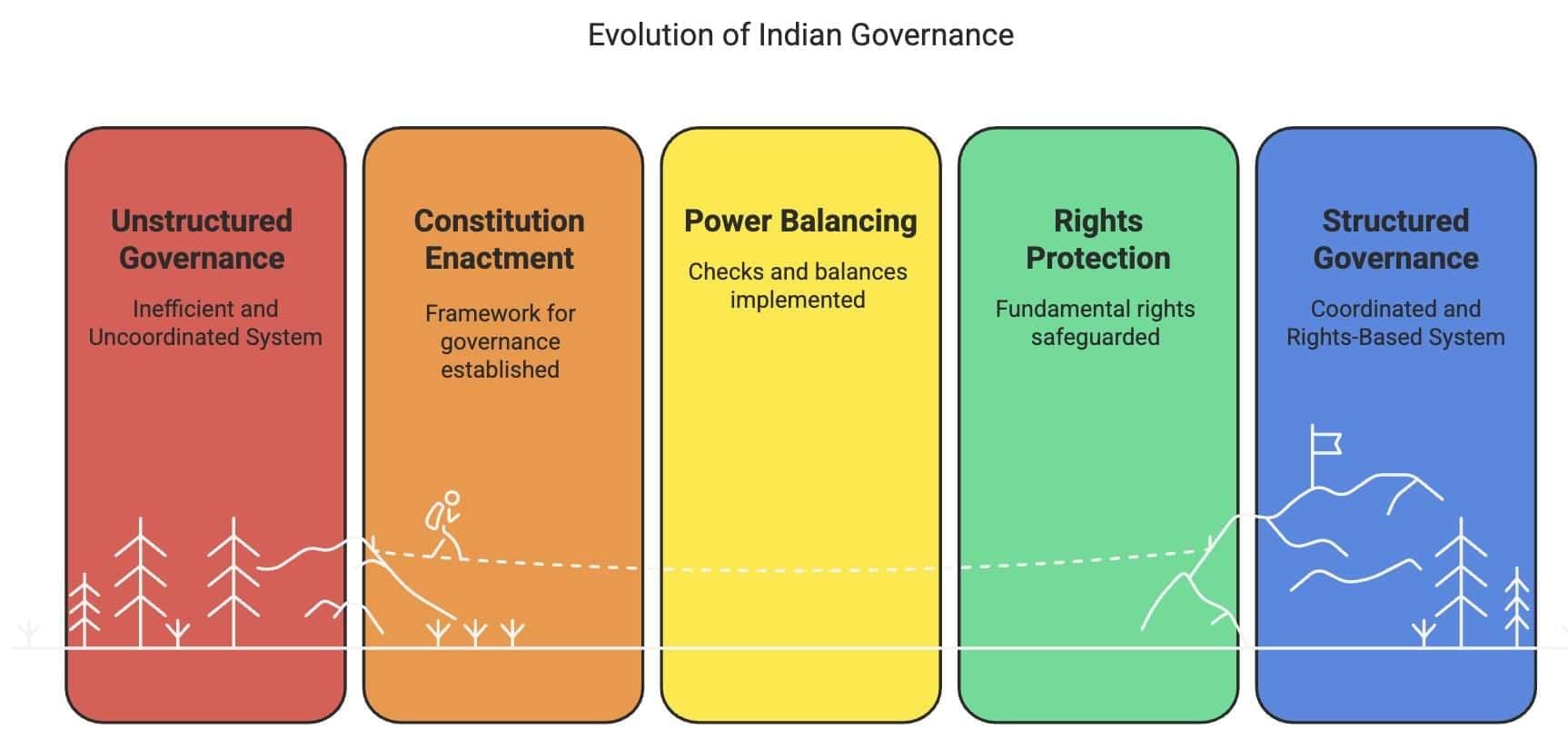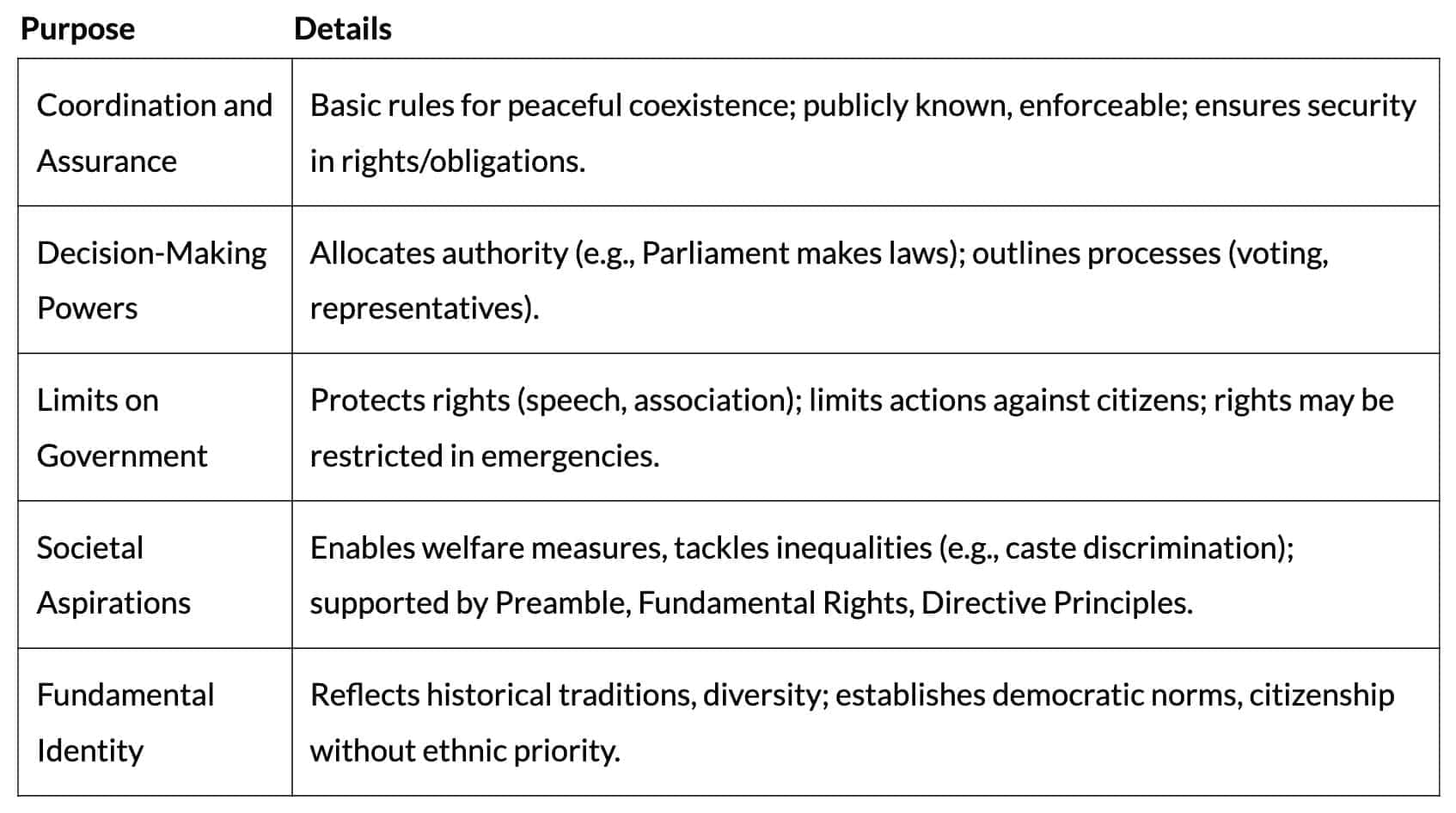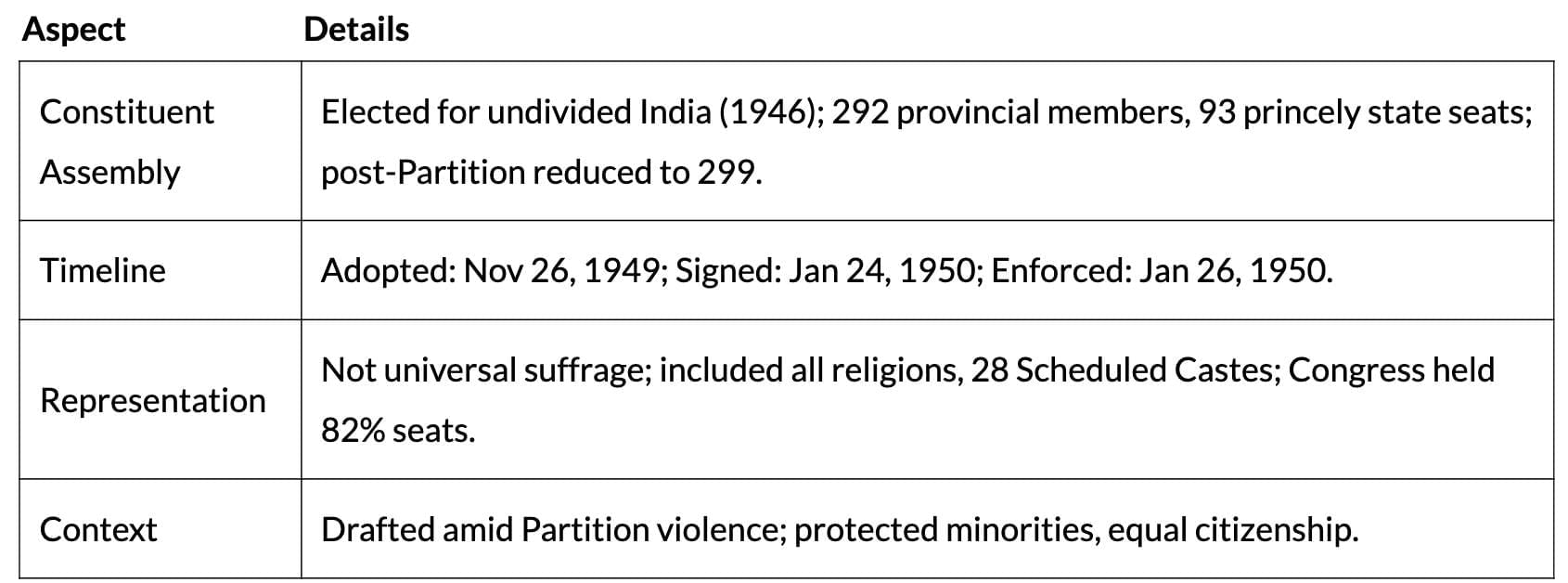Humanities/Arts Exam > Humanities/Arts Notes > Political Science Class 11 > Cheat Sheet: Constitution: Why and How?
Cheat Sheet: Constitution: Why and How? | Political Science Class 11 - Humanities/Arts PDF Download
The Indian Constitution, born from the independence struggle, provides a framework for governance, balances power, protects rights, and reflects societal aspirations. It ensures coordination, prevents misuse of authority, and embodies the collective identity of the people.

Why Do We Need a Constitution?

Authority of a Constitution

Mode of Promulgation

Substantive Provisions

Balanced Institutional Design

How Was the Indian Constitution Made?

Principle of Deliberation

Procedures

Inheritance of the Nationalist Movement

Institutional Arrangements

Conclusion
The Indian Constitution’s authority stems from its balanced design, public legitimacy, and embodiment of nationalist values. It ensures justice, equality, and governance through effective power distribution and adaptability, serving as a vital framework for India’s diverse society.
The document Cheat Sheet: Constitution: Why and How? | Political Science Class 11 - Humanities/Arts is a part of the Humanities/Arts Course Political Science Class 11.
All you need of Humanities/Arts at this link: Humanities/Arts
|
43 videos|268 docs|39 tests
|
FAQs on Cheat Sheet: Constitution: Why and How? - Political Science Class 11 - Humanities/Arts
| 1. Why is a constitution necessary for a country? |  |
Ans. A constitution is essential for a country as it serves as the supreme legal document that outlines the fundamental principles, structures, and processes of governance. It establishes the authority of the state, delineates the rights and responsibilities of citizens, and provides a framework for the protection of individual liberties. By doing so, a constitution helps maintain order, promote justice, and ensure accountability among government institutions.
| 2. What are the substantive provisions typically found in a constitution? |  |
Ans. Substantive provisions in a constitution generally include the declaration of fundamental rights and duties, the structure of government (executive, legislative, and judiciary), the distribution of powers between different levels of government (federal or unitary), and procedures for amending the constitution. These provisions collectively define how the state operates and how citizens interact with it.
| 3. How does the authority of a constitution derive legitimacy? |  |
Ans. The authority of a constitution derives its legitimacy from the consent of the governed. This means that a constitution is often adopted through democratic processes, such as referendums or the deliberations of elected representatives. The legitimacy is further reinforced when citizens recognize the constitution as a binding framework that represents their collective will, values, and aspirations.
| 4. What were the key principles and procedures involved in the making of the Indian Constitution? |  |
Ans. The Indian Constitution was crafted through a process that emphasized deliberation and inclusivity. Key principles included the acknowledgment of India's diversity and the need for a democratic framework. The Constituent Assembly, formed in 1946, engaged in extensive debates and discussions, incorporating feedback from various stakeholders. This participatory approach ensured that the Constitution reflected the aspirations of the Indian populace.
| 5. What is meant by balanced institutional design in a constitution? |  |
Ans. Balanced institutional design refers to the arrangement of various branches of government in a way that prevents the concentration of power and promotes checks and balances. A well-designed constitution ensures that the executive, legislative, and judicial branches function independently while also being interdependent. This balance helps to safeguard against the abuse of power and upholds the rule of law.
Related Searches
















